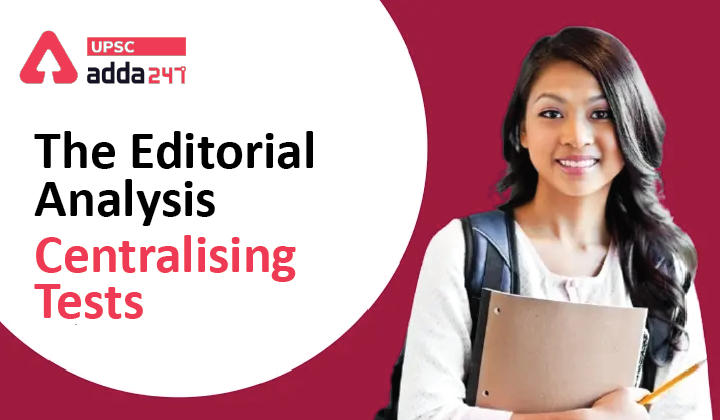Table of Contents
Centralising Tests- Relevance for UPSC Exam
- GS Paper 2: Issues relating to development and management of Social Sector/Services relating to Health, Education; & Human Resources.
Common University Entrance Test (CUET) in news
-
- Recently, the decision was taken to conduct a Common University Entrance Test (CUET) for admission in undergraduate programs in all University Grants Commission (UGC) funded Central Universities (CUs) from 2022-23.
- This decision to conduct Common University Entrance Test (CUET) is being criticized by many.
Common University Entrance Test (CUET)
- Background: The Common University Entrance Test (CUET) proposal is influenced by the National Education Policy (NEP).
- National Education Policy (NEP) advocates common entrance examinations by the National Testing Agency for undergraduate and graduate admissions and fellowships.
- Over a dozen CUs admits students to undergraduate programs using Central Universities Common Entrance Test (CUCET) scores.
- About: The proposed CUET, in 13 languages, seeks to make it mandatory for 45 CUs — there are 54 such institutions — to conduct admissions using a single national level test score.
- Prior Recommendation: In 1984, the Madhuri R. Shah Committee, looking into the working of CUs, recommended a national merit examination.
- Expected Benefits: CUET would spare aspirants from taking multiple entrance tests and also eliminate the unfair advantage gained from disproportionate scores in class XII.
Associated Criticism of CUET
- Killing Diversity of Knowledge System: Critics are evidently viewing this development through the prism of the present government’s obsession with pushing the ‘one nation, one standard’ maxim in different sectors.
- However, in 1984, the Madhuri R. Shah Committee, looking into the working of CUs, recommended a national merit examination.
- Doubts over Reservation: Many believe that the one Common University Entrance Test (CUET) will negatively affect the candidates who benefit from present reservation policy.
- However, the UGC has clarified the existing scheme of reservations in individual universities would not be disturbed.
- Fails to consider regional disparity: the CUET may not qualify as a wholesome determinant of merit given the educational and regional disparities in India.
- While a vast majority study in State Boards, the test would be based on the NCERT syllabus, followed largely in CBSE schools.
- The policy limits the Class XII marks as a qualification benchmark and not a co-determinant of merit.
- Concerns of States: Education Ministers from Tamil Nadu, Meghalaya and Arunachal Pradesh have flagged some legitimate concerns.
- In the northeast, the argument about the test possibly affecting the interest of State domiciles to secure admission in a university in the region cannot be ignored.
- Creating Divide between Rich and Poor: It has been sufficiently demonstrated that common entrance tests spawn the coaching industry and induce cost-heavy hybrid courses from class VI onwards.
- This will result in creating a divide between the haves and have-nots.
Conclusion
- The idea of CUET needs to be dispassionately examined if prescribing a single entrance test as a sole determinant of merit, either for CUs or for the higher education system as a whole, is pragmatic.



 TSPSC Group 1 Question Paper 2024, Downl...
TSPSC Group 1 Question Paper 2024, Downl...
 TSPSC Group 1 Answer key 2024 Out, Downl...
TSPSC Group 1 Answer key 2024 Out, Downl...
 UPSC Prelims 2024 Question Paper, Downlo...
UPSC Prelims 2024 Question Paper, Downlo...




